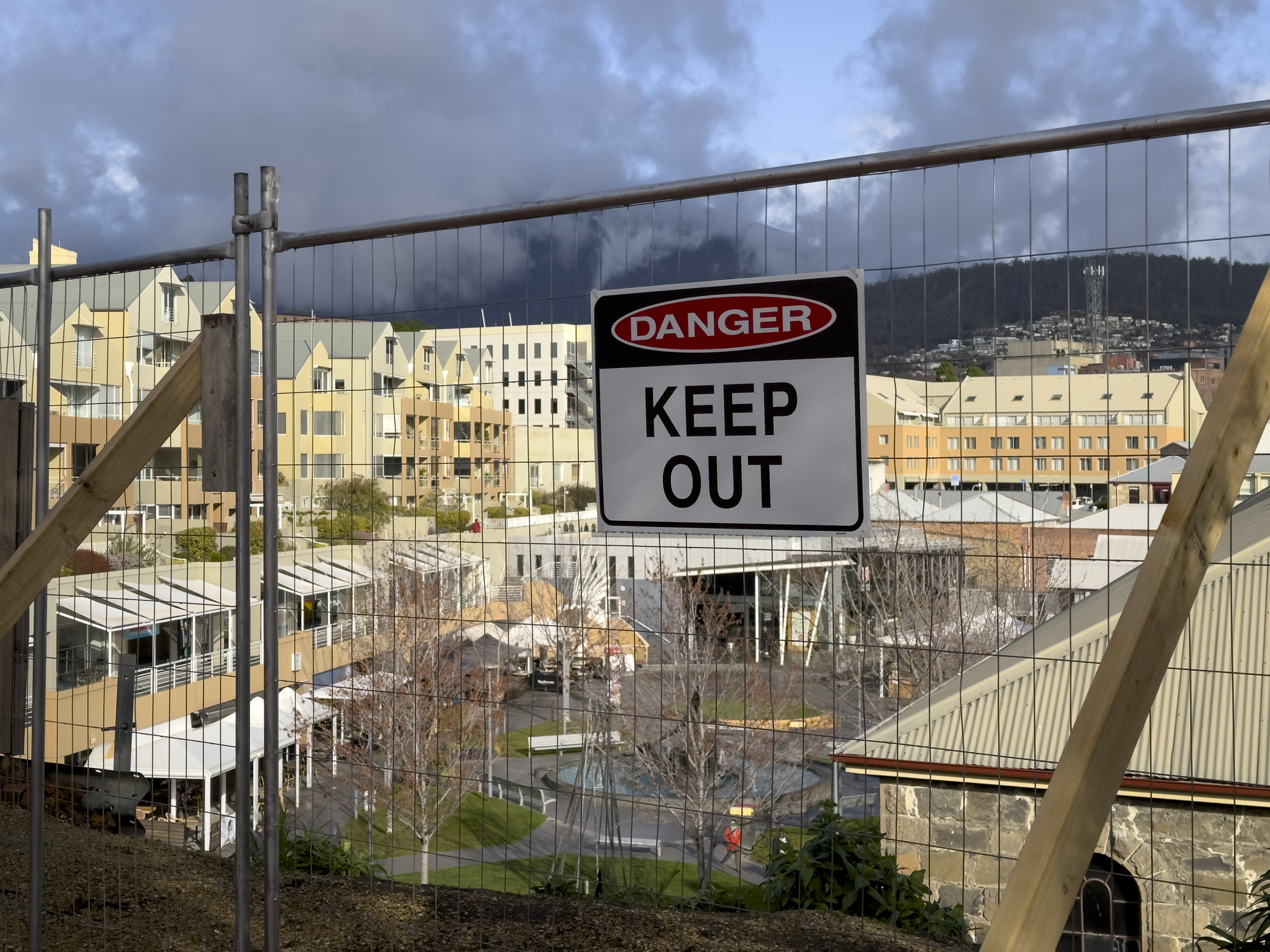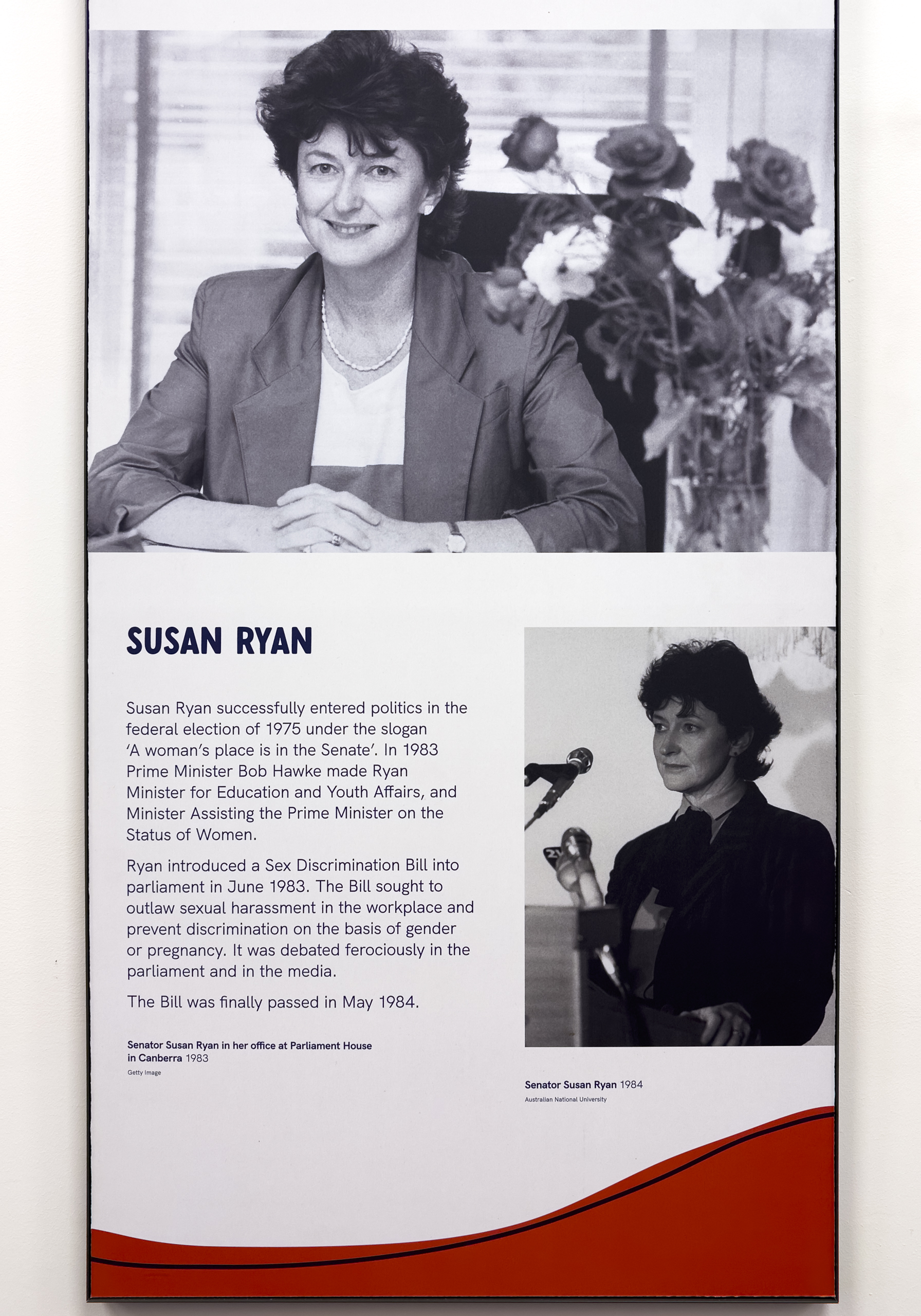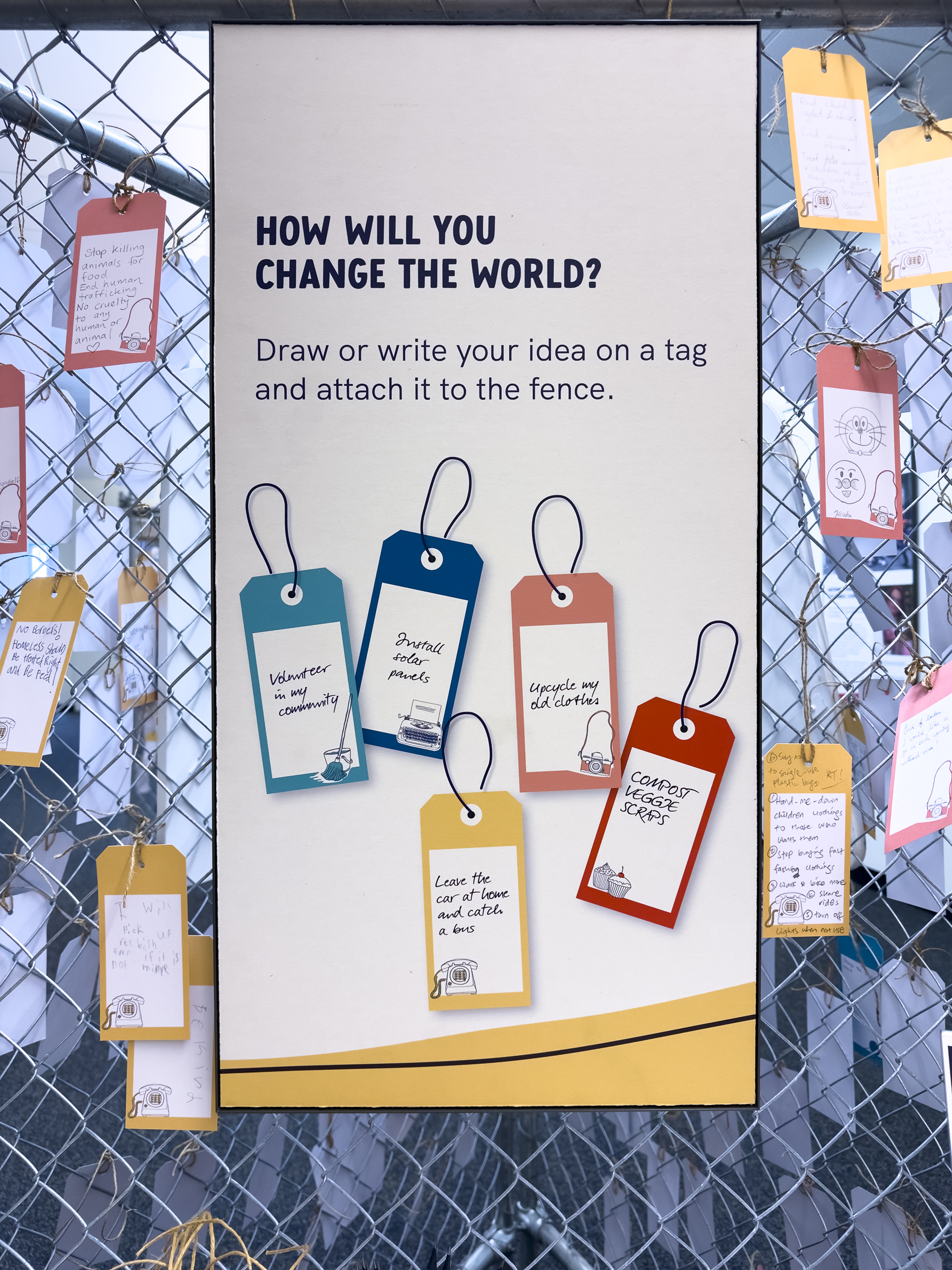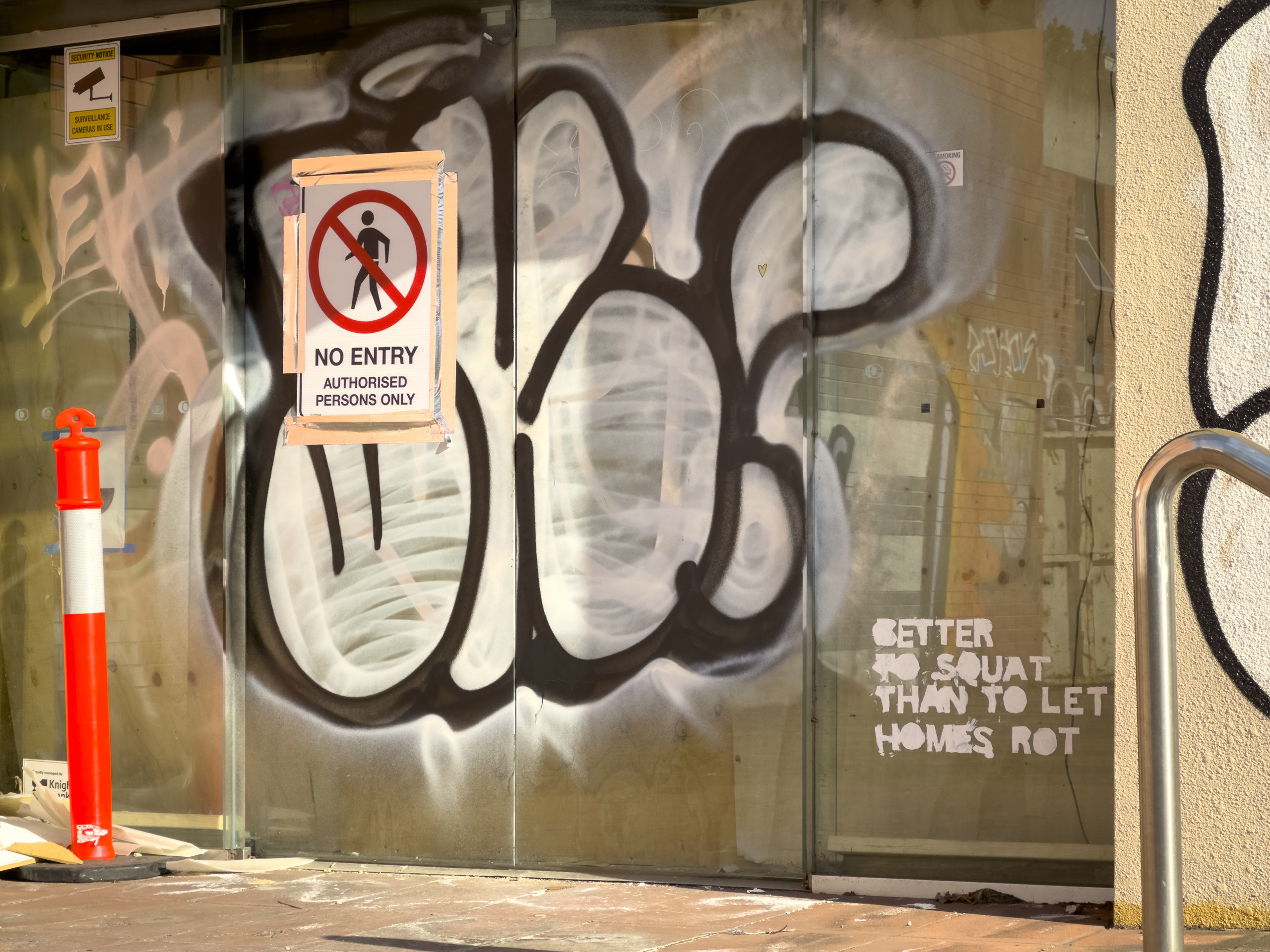Week 37/2024: A milestone week
Week of 9 September 2024
This week was a milestone birthday for a member of my immediate family. It was exciting (for them) and a reflective time (for me). Maybe I’ll share some of that, maybe I won’t. Some of it still hurts.
Language matters
Content advice: This post mentions suicide in relation to the origins of the LGBTIQA+ advocacy organisation Working It Out.
On Monday, I went to a workshop called Language Matters run by Working It Out.
If you aren’t familiar with WIO, it’s Tasmania’s sexuality, gender and intersex support, education and advocacy service.
WIO offers support for lesbian, gay, bisexual, trans and gender diverse, intersex, queer and asexual (LGBTIQA+) Tasmanians. It also provides education programs for schools and workplaces.
Our workshop was a two-hour session around identity and language. It looked at how language can be used to support inclusion for people of diverse gender, sex or sexuality.
I love attending sessions like this because different presenters bring different approaches and different experiences to what they’re talking about.
History of WIO
Our trainer, Tracey, began the session by telling us the history of WIO.

WIO was formed in 1998, the year after homosexuality was decriminalised in Tasmania after a long, turbulent campaign. Tracey explained that, even though the campaign was successful, the effects of longstanding hatred, harassment and violence on members of the LGBTIQA+ community persist today.
Community attitudes during the campaign led to an increase in deaths by suicide of young gay Tasmanians, particularly on the north west coast. This led to a group of concerned community members commissioning a report. The report, Working It Out: A needs-based analysis of sexual minority youth in North West Tasmania called for specialist services to support LGBTIQA+ people—and from this, Working It Out, the organisation, was born.
Why language matters
It’s important to know what language is okay and what isn’t when you’re talking about people from any minority group.
Tracey explained that language has been used to humiliate and dehumanise people from minority groups across all spectrums, not just LGBTIQA+ people. It serves to keep minority groups “in their place” so that they feel they have to remain invisible. As a result, they are unable to find a safe space to be open and to be themselves.
We discussed the meaning of all the terms in the LGBTIQA+ acronym, and some of the problems and prejudices that people identifying with each of them can face. We learned some people identify with more than one, and some people use the term ‘queer’ to describe their identity without specifying exactly what that means for them.
Transgender people
I was particularly interested in the discussion about transgender people, having recently read Jan Morris’s account of her transition.
For a very simple explanation of the difference between sex and gender, have a look here.
In a sentence or two, ‘sex’ is how you are assigned when you’re born, mostly based on the things doctors can observe (such as genitals and hormones). In general, people will have certain expectations of you and will treat you a certain way because of the sex you’ve been assigned.
Your assigned sex may or may not match your gender, which is your own sense of how you feel in your body.
People whose gender matches their assigned sex are known as cisgender. Thus, I am a cisgender female.
People whose gender identity doesn’t match the sex they were assigned at birth are called transgender (e.g. someone who was assigned male at birth, but identifies as a woman). There are other nuances , like people who don’t identify with any gender or are gender-fluid, as well as people whose sex characteristics might be not fully male or female. This includes intersex variations – which I learned about back in week 25.
So ‘trans’ is an umbrella term where the person’s gender identity isn’t the same as the sex they were assigned at birth.
Misconceptions
We talked about some of the misconceptions people can have about trans individuals. Tracey emphasised that no, there are not more trans people now than there were in the past. They were always there but it wasn’t always safe to come out.
It sill isn’t in many places.
As was the case with Jan Morris, most transgender people, know between the ages of two and four that their assigned sex doesn’t match who they feel they are. Tracey said they feel wrong but at this age they don’t have the words to articulate this. They just know they shouldn’t feel like this. Gender identity takes a lot of working out, which is why a lot of trans people don’t come out until much later in life, because they need time to figure it out.
Transitioning
Some trans people choose to transition to the gender they identify with. However, this is a long, complicated and expensive path. In doing this, people may take some or all of the steps, which include
- Social transition (changing their name, their pronouns, the way they dress, their appearance)
- Legal transition (changing their name on legal documents)
- Medical transition (which may include hormone therapy and surgery. Tracey explained this is a mentally and emotionally exhausting process and not everyone is able to do it. It can take between five and ten years, involving a great deal of counselling and jumping through legal hoops. It costs tens of thousands of dollars and is not, as some people believe, something that anyone undertakes lightly.)
Tracey said many trans people will step back from transition because it’s so hard to do, with major emotional and financial costs. However, this doesn’t mean they’ve “changed their minds”. They still identify as the gender they identify with but the transition process is just too much to cope with.
I can’t imagine the toll this must take on people.
What can we do?
I think the most important thing we can do is to learn as much as we can, especially about the identities within the LGBTIQA+ spectrum that we don’t know a lot about.
Behind the acronym are real people with real experiences who suffer real hurt and harm when others don’t understand—or don’t want to understand.
For example, it’s not okay to question why we have events like Pride Week, which celebrate the LGBTIQA+ community, or to say “I don’t care who you sleep with so why do you need to talk about it”. Memes about trans people aren’t funny, and refusing to use ‘they’ as a singular pronoun because it’s grammatically incorrect is wrong.
These kind of statements usually come from people who have never been harassed or discriminated against because of their sexuality or their gender identity. However, in saying things like this, people are denying the lived experiences of people for whom their choice of partner or their gender identity has resulted in exclusion, harassment, discrimination and harm. Take a look at the Rainbow Realities report, which I wrote about a couple of weeks ago, to find about more about this.
WIO’s role
Part of WIO’s role is to explain the lived experience of LGBTIQA+ people so that we can all learn more and better understand why language matters. As Tracey said, you don’t have to change the way you see yourself but you need to expand your awareness of how others see themselves. You may not understand their experience, which is fine—it’s their experience not yours. But you don’t need to understand another person’s experience to accept that it is their experience. Who they are has no impact on who you are.
It’s up to all of us to make a community where everyone can be seen, so that other people feel safe because “you can’t be what you can’t see.” The safer it is for people to be themselves, the more they’ll be visible, and the safer other people will feel to be themselves too.
At the most basic level, we want to feel safe, included and acknowledged, so why wouldn’t we want this for our friends, colleagues and everyone else around us too?
On pronouns
One way we can acknowledge people is by using their pronouns, whether this is she, he, they, or something else. (Minus 18 has a great article about this.)
It’s important because it tells people “we see you as you see yourself”. Some people might feel uncomfortable about using certain pronouns or language that affirms someone’s gender, but for the other person, it goes beyond discomfort and leads to actual harm. Tracey observed that being misgendered can be extremely upsetting for people, and if it happens over and over it’s like a thousand tiny paper cuts. It’s more than embarrassing; people who are misgendered can feel like they are suffocating or shrinking or melting.
When it comes down to it, using affirming language is not about you. It’s about the other person, even if you don’t understand their experience. By accepting their identity and using the language they use, you’re treating them the way they want to be treated, and helping them feel included, acknowledged and seen.
Of course, sometimes this is hard, and people do make honest mistakes. Tracey recommended that if this happens and someone points it out to you, you need to acknowledge your error, correct yourself and move on. If you make a big deal of it and say how bad you feel, this makes it about you, and puts it back on the person to make you feel better.
Don’t do this.
I learned a lot from this workshop and recommend that if you get the opportunity to attend one of WIO’s sessions, to go along. Even better, find out if it’s something you can bring to your own workplace.
Week 37 summary
Habit tracker
- 9.30 shutdown: 3/6 days
- 8,000 steps: 5/7 days
What was the best thing about this week?
The Language Matters course.
What did I notice this week?
The work to demolish the old quarry chute in Salamanca Square from the top.

What did I learn this week?
I went to an exhibition at the library called ‘Disrupt, persist, invent: Australians in an ever-changing world’, a touring event from the National Archives.
This exhibition looks at the ways in which people have achieved social change in Australia. It focuses on how the change took place—perhaps “by noisy protest or by quiet persistence”—not what the cause or the campaign was. It’s intended to show that “change takes a tremendous investment of time and energy, and the sustained actions by people over time can really make a difference”.
Something that stood out to me was that the Sex Discrimination Bill was introduced into parliament by Senator Susan Ryan, Minister Assisting the Prime Minister on the Status of Women, in 1983. It was passed in 1984. That is, sex discrimination legislation, something I’ve taken for granted for every day, actually didn’t exist when I was a child. On the contrary, it has come into effect in my lifetime.

Wow.
The exhibition invites visitors to contribute their thoughts on changing the world by drawing or writing their idea and attaching it to the fence.

Mine is not in this picture.
Related, I’ll just leave this here . . .

I also learned that back in the day, bell ringing was a common form of exercise. To practice without creating noise (a “dumb” or silent bell), a weight was attached to a short bar, creating the first version of what we now call a dumbbell.
What am I reading?
- The Good Ally by Nova Reid